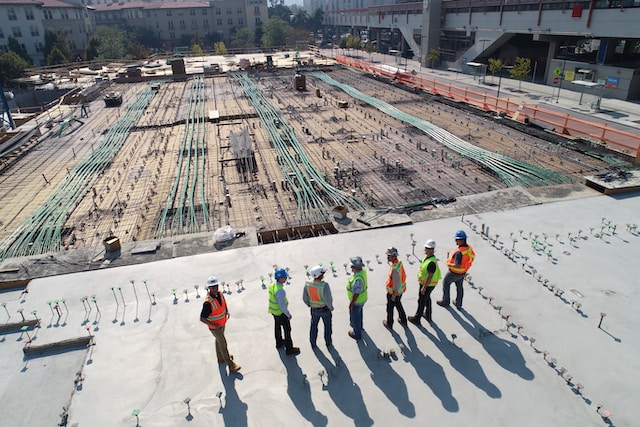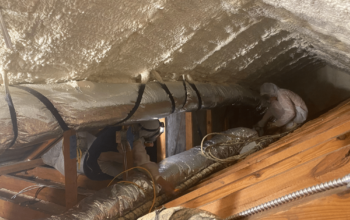Engineering is a constantly evolving field, with advancements being made every day to improve the performance and functionality of various structures and systems. From buildings and bridges to vehicles and machines, engineers are always striving to find innovative solutions to enhance safety, efficiency, and durability. One important aspect that is often overlooked is the control of vibrations. Excessive vibrations can not only lead to discomfort but also cause damage and failure of critical components.
This is where vibration control overlays come into play. These specialized materials are designed to reduce the magnitude of vibrations and improve the overall performance of engineered systems. In this article, we will explore the concept of dynamic dampening and the crucial role that vibration control overlays play in engineering. From their composition and applications to their benefits and limitations, we will delve into the intricacies of these materials and understand how they contribute to the advancement of engineering practices. So let us dive into the world of dynamic dampening and discover the significance of vibration control overlays in modern engineering.
Enhancing structural integrity with dynamic dampening.
To ensure the longevity and performance of structures, enhancing their structural integrity is of paramount importance in engineering. One effective method that has gained significant attention is the application of dynamic dampening techniques, specifically through the implementation of vibration control overlays. These overlays play a vital role in mitigating the adverse effects of vibrations, which can compromise the stability and durability of structures.
By absorbing and dissipating vibrational energy, dynamic dampening overlays effectively reduce the risk of structural failure, improve overall performance, and enhance the safety of engineered systems. This innovative solution demonstrates the continuous pursuit of engineering advancements aimed at optimizing structural integrity for a wide range of applications.
Reducing noise and vibration levels.
In addition to enhancing structural integrity, another crucial aspect in engineering is the reduction of noise and vibration levels. Excessive noise and vibrations not only compromise the comfort and well-being of occupants but also have detrimental effects on the performance and lifespan of machinery and equipment. Engineers employ various techniques and technologies to minimize these disturbances, including the use of vibration isolation mounts, acoustic panels, and damping materials.
By strategically implementing these solutions, engineers can effectively mitigate noise and vibration levels, ensuring optimal performance, durability, and user experience in a wide range of applications. The commitment to reducing noise and vibration levels exemplifies the meticulous attention to detail and comprehensive approach that engineers undertake in their pursuit of excellence in engineering design.
Improving overall product performance.
To achieve superior product performance, engineers must focus on a holistic approach that goes beyond structural integrity and the reduction of noise and vibrations. By integrating advanced technologies and optimizing key components, overall product performance can be significantly enhanced. This involves carefully analyzing the system dynamics, identifying potential bottlenecks, and implementing innovative solutions to overcome limitations.
Anti vibration pads for heavy machinery are crucial as they help reduce noise, limit machine movement, and minimize structural damage caused by vibrations.Installation of anti-vibration pads should be precise and follow the manufacturer’s guidelines for optimal performance. Placing them at strategic points under the machinery can significantly reduce vibrations and associated noise, benefiting both the equipment’s longevity and minimizing disturbances in the surrounding environment.
Through rigorous testing and continuous evaluation, engineers can fine-tune and optimize various aspects such as power efficiency, response time, stability, and reliability. By prioritizing performance improvements and leveraging cutting-edge methodologies, engineers can ensure that the final product meets and exceeds customer expectations, setting new standards of excellence in the industry.
Increasing lifespan and reliability.
In addition to achieving superior product performance, increasing lifespan and reliability are crucial factors in engineering. The integration of vibration control overlays plays a fundamental role in ensuring the longevity and dependability of various systems. By effectively managing and dampening vibrations, potential damage and wear can be minimized, extending the lifespan of critical components.
Moreover, reducing excessive vibrations enhances the reliability of the system, preventing unexpected failures and downtime. Through meticulous design and implementation of vibration control overlays, engineers can optimize the performance and durability of engineering structures, providing long-lasting and reliable solutions to meet the demands of various industries.
Utilizing advanced engineering technology.
Advanced engineering technology plays a pivotal role in optimizing the effectiveness of vibration control overlays in engineering. By harnessing innovative techniques and cutting-edge tools, engineers can accurately analyze and predict the behavior of vibrations within complex systems. This allows for the precise design and placement of vibration control overlays, ensuring maximum damping efficiency and minimizing potential risks.
Additionally, advanced simulation and modeling software enable engineers to assess the impact of different factors, such as material properties and environmental conditions, further enhancing the reliability and longevity of engineering structures. By leveraging the power of advanced engineering technology, practitioners can continue to push the boundaries of vibration control, delivering superior solutions that meet the evolving demands of modern industries.
In conclusion, the use of vibration control overlays in engineering plays a vital role in ensuring the structural integrity and longevity of buildings and other structures. These innovative materials have been proven to effectively dampen vibrations and reduce the risk of structural damage, making them a valuable tool in the construction industry.
As technology continues to advance, we can expect to see even more advanced and efficient forms of vibration control overlays being used in engineering projects. With their ability to enhance safety and stability, it is clear that the importance of dynamic dampening cannot be overlooked in the field of engineering.
Related Posts












